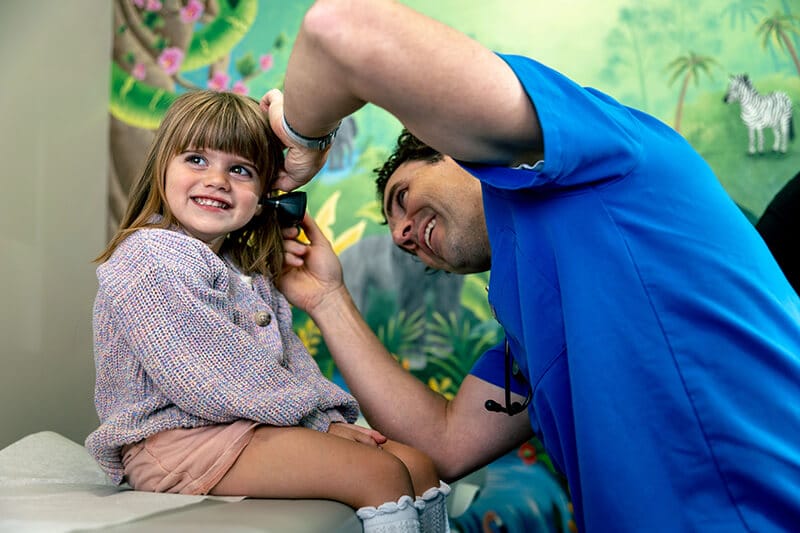Every parent has stories about sleepless nights trying to soothe a crying baby. You pace around the house with your baby on your shoulder. You read aloud and sing nursery rhymes. You put them in the car and drive around the block until the sun comes up, and yet nothing seems to work. Sleepless nights leave parents tired and wondering if they’ll ever feel rested again.
Self soothing baby techniques can be a game-changer for parents struggling with sleepless nights. What is self soothing? It’s the process of teaching your baby to manage their own emotions and feel comfortable enough to fall asleep and stay asleep. Teaching your baby calming strategies can help them fall asleep on their own and learn to fall back asleep if they wake up in the middle of the night without your help. It may also help them develop independence and emotional regulation during waking hours.
At birth, crying is the only way your baby communicates with you. Often, those tears are a sign of a legitimate grievance. Tears might mean your baby is hungry, overtired, bored, frustrated, scared, soiled, sick, or in pain. Before you even consider babies self soothing, make sure all of your baby’s needs are met. However, if they are fed, clean, and otherwise well, it might be a good time to practice self-soothing.
It’s not about ignoring your baby’s cries or letting them cry themselves to sleep; it’s about taking a beat to understand what those cries could mean and responding appropriately. Rather than jumping to the rescue every time your baby makes a peep, allow them the opportunity to self soothe baby with minimal help. Here’s how!
When To Start Self-Soothing: How early is too early?
Parents often wonder, when do babies learn to self soothe? You don’t need to worry about self-soothing until your baby is at least three months old. Just like their physical muscles, newborns don’t yet have control over their emotional state. They don’t have the capacity to self-soothe; you’ve got to do it for them.
When your baby is three months old or older, you can start trying self-soothing techniques, but you should temper your expectations. Learning to regulate is a lifelong process, and your baby is just beginning. You can help them by keeping to a schedule as much as possible. Putting your baby down for naps and bed at the same time every day will help their body know when to get ready for sleep.
Teaching Your Baby To Self-Soothe
If your baby is crying and you’ve eliminated the usual suspects (hunger, dirty diaper, noise, etc.), try these tactics to help them calm down. It may seem difficult, especially if your baby won’t stop crying, but start with the least disruptive strategy and work your way up. The process may take some time and differ from child to child and night to night.
Parents looking for how to teach infant to self soothe should follow a step-by-step approach. Give each of these self-soothing strategies a few minutes before moving on to the next.
- Look at your baby: Approach your baby’s crib and look at them. Make eye contact, but don’t talk or touch yet.
- Talk: Talk gently to your baby while making eye contact. Ask them questions or tell a story, and keep your voice low and soothing.
- Gentle touch: Place a hand gently on their arm or belly, but don’t pick them up yet.
- Change body position: Gently pull arms or legs toward the torso. Roll them onto their side or stomach for a few minutes, but only while awake. Babies should always sleep on their backs.
- Pick up: If your baby is still upset, pick them up and hold them. Try different positions, including at the shoulder, on your lap, or draped in a belly hold.
- Rock: Keep holding your baby and rock them gently back and forth. You might also add some gentle massage.
- Try a pacifier: Offer a binky or another soothing object. Avoid toys or anything that might be stimulating.
- Feed: Even if your baby wasn’t hungry when you started, they may have become hungry. If nothing else has worked, a bottle might do the trick.
When your baby is crying in the middle of the night, you want to do anything to make them feel better. Trying everything simultaneously to make them happy might be tempting, but do your best to resist that urge. Your baby may need a little time to adjust to the new circumstances.
Parents often ask about the right age for self soothing, and while some babies may start early, others take longer. It’s important to remember that every baby is different.
Remain calm, quiet, and gentle. Move slowly, speak quietly, and avoid extreme expressions or animated movements. And give yourself a break if you fall short. Self-soothing is a learning process for babies and adults.
Don’t give up if it doesn’t seem to work at first. Your baby is experiencing everything for the very first time, and they need time to adapt. If you keep it up, your baby may start to find comfort in the routine. Later, if you notice that a particular strategy works for your baby, you can jump straight to that the next time. There’s no need to start at the beginning each time. The goal is to soothe with the minimum interruption to sleep.
That said, babies are constantly changing, and baby self-soothing at 2 months may look very different from self-soothing at six months or beyond. What works today may not work tomorrow, and vice versa. Keep paying attention to what your baby is telling you and adjust your tactics along with them. There’s no one-size-fits-all solution; the right system is the one that works for your family. If you’re still struggling, talk with your pediatric provider. They can answer questions and provide direction or resources for overcoming challenges.






